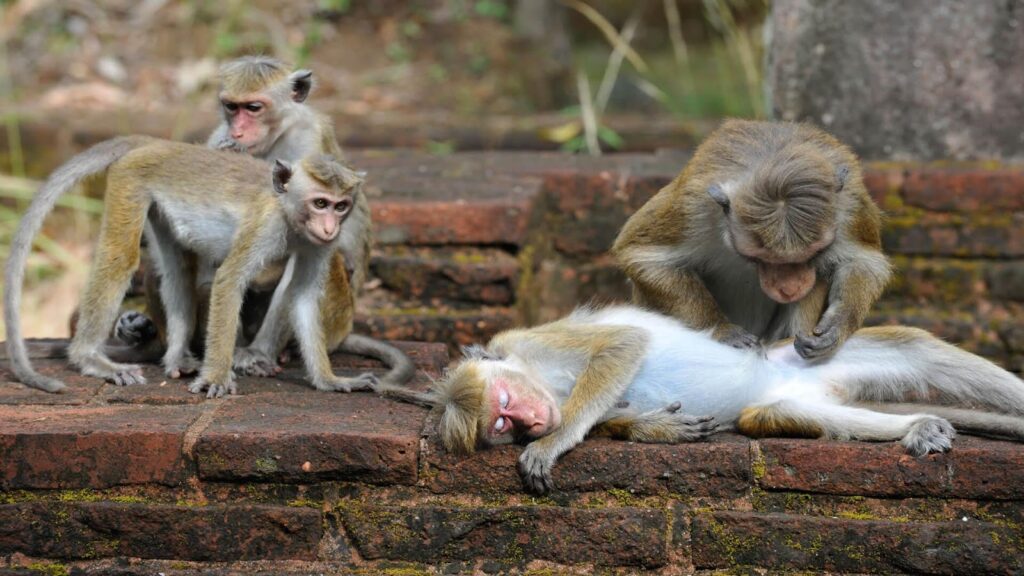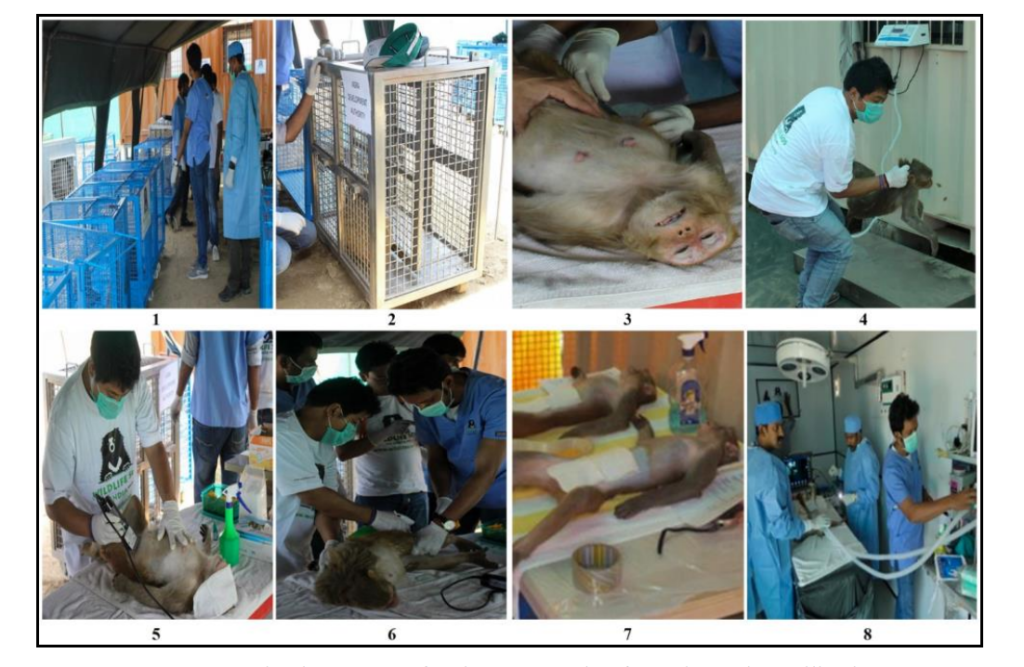Physical Address
23,24,25 & 26, 2nd Floor, Software Technology Park India, Opp: Garware Stadium,MIDC, Chikalthana, Aurangabad, Maharashtra – 431001 India
Physical Address
23,24,25 & 26, 2nd Floor, Software Technology Park India, Opp: Garware Stadium,MIDC, Chikalthana, Aurangabad, Maharashtra – 431001 India

Human-wildlife conflict in Sri Lanka is a significant problem in the country. Over the years, the human-wildlife conflict in Sri Lanka has intensified due to various factors. Though human-wildlife conflict was an important issue in rural and backwoods areas, this influence has been distributed even into urban areas in the country. That means, instead of solving the problem with time, that is getting more and more aggravating with time.
Human-monkey conflict is one of the significant parts of human-wildlife conflict in Sri Lanka. Though monkeys cannot harm human lives, they are now damaging human lifestyles in several ways in many areas of the country.
Matale district is one of the main districts affected by this issue.
Monkeys in Sri Lanka
In Sri Lanka, there are three types of monkeys.



| Tufted Grey Langur | Purple-Faced Leaf Monkey | Toque Macaque (Rilawa) |
| Semnopithecus priam | Trachypithecus vetulus | Macaca sinica |
| Native to South Asia | Endemic to Sri Lanka | Endemic to Sri Lanka |
| They have a long tail and tufts of hair on their heads. | Have a distinctive purple face. | Have a unique appearance with a reddish brown coat and a crown of hair on its head resembling a ‘toque’ or traditional chef’s hat. |
| Feed on leaves | Feed on leaves and fruits. | Feed on fruits, seeds, nuts, mushrooms and occasionally reptiles and birds. |
| Abundant in dry zone forests and within human dwellings | Closed canopy forests in the mountain areas and wet zone | Forests, rural and urban areas in dry zone |
| ‘Nearly Threatened’ according to IUCN Red List | ‘Endangered’ according to the IUCN Red List | ‘Endangered’ according to the IUCN Red List |
The toque macaque is seen as the most common of these three types of monkey species in Sri Lanka. There is no proper data on the census of toque macaques in the country.
The railway in Sri Lanka is the most aggressive and causes human-wildlife conflict.
Effect of Toque Macaque to Matale District

Matale district has different climate zones. The upper part, including Dambulla, belongs to the dry zone. Most of the district consists of dry and intermediate zones, which are very preferable for the life of many monkeys. Purple-faced leaf monkeys are not very common in Matale. Toque macaques are common in Matale, including Dambulla, Sigiriya, Yatawatta, Matale town and many other areas.

Ms. Ajitha Manikrama, District Director of Agriculture of Matale District Secretariat, was contacted for more information on the human-monkey conflict in the Matale district. Though there is no statistical evidence to show the damage from toque macaque to the agricultural land, she said many complaints are received daily from the farmers in the Matale district. She mentioned that people in the Yatawatta area are suffering more from this issue. Small-scale farmers and home gardeners are the most affected parties by this issue. They have complained that toque macaques or rilawa do not leave any fruit, flower or leaf in some plants. Some plants are threatened in those affected areas due to a lack of leaves, damaging their photosynthesis ability.
Toque macaque impacts agriculture and humans’ day-to-day lives. Even in Matale town, you can expect to see monkeys trying to steal fruits and vegetables from shops. Because of their aggressive behaviour, property damages are also recorded. They destroy roofs of houses, glass and windows, vehicle side mirrors, etc.
Anyway, though there are other types of monkeys in Matale, they are not as aggressive as toque macaques. Ms Ajitha said that the toque macaques become the most bothersome monkeys in Matale because of the wide distribution of toque macaques with the climate of the area, their aggressive behaviour, their food patterns with omnivorous food habits, their enhanced general intelligence and their laziness to forage. They like to find food most efficiently, so they are attracted to places with food abundance, such as human households and gardens. However, the other types of monkeys in Sri Lanka mostly prefer to live in the forests and do not regularly come to civilised areas to forage.
Human-Monkey (Toque Macaque) Conflict
Human-monkey conflicts can arise for various reasons, including habitat loss, resource competition, agricultural activities and urban expansion. Monkeys may venture into human settlements for food as humans encroach upon natural habitats, leading to conflicts. Additionally, monkeys may damage the crops, causing frustration among farmers. It is expected to find toque macaques travelling from a small spinney area to the areas of human settlements. An outstanding characteristic of toque macaques is they are not afraid of public spaces. Usually, many wild animals prefer to avoid public places with many humans. But toque macaque does not care about that and cares about fulfilling their food needs.
With the decrease in the number of toque macaque predators, their species increase the population. Predator-prey relationships are significant to keep the balance of the ecosystem. Anyway, there are fewer such predators in the environment, such as foxes, jackals, and leopards. This contributes to higher expansion and growth of population sizes in animals such as toque macaques and peacocks.
Climate change is another main reason for the increased human-monkey conflict in Sri Lanka. This influences human-monkey conflicts in several ways.
Controlling the Impact on Toque Macaque in Matale District
According to Ms Ajitha Manikrama, District Director of Agriculture, the impact of toque macaque on the lifestyles of Matale district people is increasing daily, and the complaints about toque macaque are also growing. Until this year, there was no permanent solution for this. Recently, the government planned to export toque macaque to China, but wild animal protection organisations disrupted that plan. Here is a news article on that. The agricultural ministry has tried different methods to support the farmers in controlling the monkey population. For example, Ms Ajitha said that, at least as a temporary solution, they started a concession system for farmers last year to buy air rifles with a 50% contribution from the government. But the toque macaque is very intelligent, and they were only scared of air rifles when they started using them. And then they could manage to avoid them and ignore them. So, that plan was not very successful.
Culling monkeys is not prohibited in Sri Lanka now, though that does not seem like a perfect way to control them. This was a step that the government took to control the monkey population and help farmers. But with the religious and cultural background of Sri Lanka, people are not inclined to cull those animals only because they destroy people’s properties or agricultural lands.
So, to control toque macaques, a sterilisation program of toque macaques is planned to be conducted. Member of Parliament, Mr. Nalaka Bandara Kottegoda, also plays a frontline role in this pilot project in Matale District. The Agricultural Ministry will fund this pilot project.
This program is running under the Department of Wildlife Conservation’s guidance. With the lead of the veterinary surgeons of the Department of Wildlife Conservation, this program is planned to sterilise both male and female toque macaques in the Matale district, initially in the Matale Pradeshiya Sabha area.

If it is successful, this method will be a permanent way to control the toque macaque population. This method is sterilisation, which is a simple, easy, and fast process.
The leading 12 groups of toque macaque have been noticed in the Matale Pradeshiya Sabha area, and first, they have to be captured, put into cages and transported to a proper place for the surgery. Anyway, for this process, people have to prepare specific cages according to the Department of Wildlife Conservation standards. There should be cages to capture monkeys individually and to transport them, about 20 to 30 in a single cage.

However, the budget for this process is around 4.15 million Sri Lankan rupees for the recognised 12 monkey groups. This budget was allocated for preparing new cages as well. If there is another step in this project, the prepared cages can be used to decrease the budget.
Ms. Ajitha said these sterilisation processes have been conducted even in India. Here is a news article on that. Also, she indicated that conducting this process once per one toque macaque group is not enough for better results. This must continue for 4 to 5 years for each group to control the population adequately.
If this plan is successful, this project can be expanded further. Ms. Ajitha said that someone needs to step into any permanent solution for human-monkey conflict and determine whether it is successful or not. This is the beginning of that.
Pros and Cons of Sterilization of Toque Macaque
Pros:
Cons:
Before implementing sterilisation programs, it’s crucial to consider the specific context, the species involved and the potential short and long-term impacts on the toque macaque population and the ecosystem. Wildlife management strategies should be carefully designed and monitored to minimise unintended consequences.
Anyway, there is a possibility that these issues may be controlled as the Department of Agriculture is collaborating with the Department of Wildlife Conservation for guidance.
Conclusion
Toque macaque is the primary monkey type which attends human-monkey conflict in Sri Lanka. Farmers and other humans in the Matale district and other areas face critical situations in their agricultural and day-to-day life with the increase in the toque macaque population sizes. As a solution, the Matale district farm department and the Ministry of Agriculture have planned a sterilisation pilot project for toque macaques. This is being conducted as a pilot project, and with the results of this project, plans will be decided on this
-With inputs from Mihiri Saparamadu –